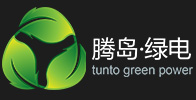cheap solar panels power consumer appliance boom in north korea
by:Tunto
2020-03-31
SEOUL (Reuters)-
Years after solar panels first appeared in North Korea, as Pyongyang tried to limit the impact of tough international sanctions, cheaper and more usable solar panels were boosting consumer consumption and industry.
Power shortages have been a concern for North Korea, with leader Kim Jong Un calling for more use of renewable energy as part of his self-drive
In response to the country\'s nuclear and missile programs, the adequacy of sanctions is growing.
Now, more and more homes, factories and businesses are equipped with solar panels, which has led to an increasing number of ordinary private markets (known as jangmadang), North defectors and recent visitors saying,
The best-selling products include water purifiers, straighters and electric bicycles, most of which are from China, but some are made in North Korea and even smuggled in from South Korea.
\"A few years ago, some restaurants and wealthy families only saw things like water purifiers, mixers and rice cookers, but they became more and more common, especially in the city,\" says Kang Mi.
Kim, an economic expert, often talks to North Koreans on the Daily NK, a site run by North defectors.
\"Some people look like an ordinary middle class --
Home in Korea, there is a wall
Led TV, multiple laptops and electric Mini cars for baby suspension.
A few years ago, North Koreans began using solar panels, mainly charging their phones and lighting their homes as backup energy for unstable areas (mainly water, electricity and coal.
Opened the State Grid
According to recent visitors and defectors, in addition to the market filled with electronic products, there are more tea houses, computer playrooms, karaoke bars and billiard halls open after switching from diesel generators to solar energy.
Such entertainment venues are becoming more and more common, not only in cities, but also in rural areas where the grid is more unreliable.
\"In the evening, usually only those places where the lights are turned on have solar panels and batteries,\" one person familiar with the matter told Reuters, who asked for anonymity due to the sensitivity of North Korean affairs.
The scope of use of the panel after use nowclosed inter-
The North Korean industrial park in the North Korean border city of Kaesong opened in 2004.
\"Now many apartment balconies collect energy in the sun during the day, so they can be easily seen,\" the source said.
The private use of solar panels has grown from a formal ban to encouragement by the ruling Workers\' Party, which has been strictly controlling the economy and the public.
Earlier this month, the official Labor News published an article about a group of workers on a cooperative farm who received solar panels and LED TVs in return for the party exceeding production targets
National television has also broadcast a series of reports on the growing use of solar energy over the past year, including 17-
The October documentary introduces equipment made locally, such as Gao
Voltage inverters for electric bikes, even portable chargers. Kim Yun-
Soung, a researcher at Seoul\'s Green Energy Strategy Institute, said North Korea\'s efforts to boost domestic solar equipment production were spurred by sanctions against imports of metal products.
\"Electricity is the biggest problem, but we have achieved such advanced technology,
The Edge technology itself started from scratch and was once monopolized by developed countries, \"said the narrator of the film, referring to the inverter.
State media listed central banks, schools, factories, and even ferries as fully powered by solar panels.
\"Once the solar panels are installed, they will give you \'free\' power,\" said Jin Yonghui, an economist at the southern country, a defector --
The Korean Development Bank.
\"So the nature of these groups is in full compliance with Kim Jong Un\'s self-mantrareliance -
Or in other words, create something from scratch.
\"Most of the panels sold on the market are imported from China, and over the past few years prices have fallen by 40% due to a global oversupply and rising North Korean production,\" said the North defectors and experts.
Reuters sources told Reuters that at 2015
The price of the watt panel is about $44.
30 these days-watt panel -
More widely used models-
The price is only about $15, Kang said.
Pyongyang did not provide data on the use of solar energy, but Kang said about 55% of North Korean households had solar panels installed.
She said the ratio is higher in Pyongyang and other cities, as well as in the border areas where Chinese goods are widely supplied.
David von shipper, Oregon
Senior assistant based at the Nautilus Institute in the United StatesS.
North Korea imported solar panels from China until 2017, totaling 29 MW, according to the think tank, from Beijing\'s customs data.
Experts said that solar energy still accounted for less than 0.
According to the South Korean Bureau of Statistics, as of 2017, 1% of South Korea\'s power generation capacity was about 7,700 MW.
According to official media reports, Pyongyang plans to increase its renewable energy capacity to 5,000 MW by 2044, focusing on wind power.
Defectors and observers say the panel has played a key role in easing public discontent over the long-standing power shortage and sanctions of the Kim Jong Il regime.
\"Kim Jong Un seems committed to economic reform,\" Feng said . \".
\"So, to some extent, the increase in energy supply has reduced the pressure on the government to provide energy to its citizens.
Years after solar panels first appeared in North Korea, as Pyongyang tried to limit the impact of tough international sanctions, cheaper and more usable solar panels were boosting consumer consumption and industry.
Power shortages have been a concern for North Korea, with leader Kim Jong Un calling for more use of renewable energy as part of his self-drive
In response to the country\'s nuclear and missile programs, the adequacy of sanctions is growing.
Now, more and more homes, factories and businesses are equipped with solar panels, which has led to an increasing number of ordinary private markets (known as jangmadang), North defectors and recent visitors saying,
The best-selling products include water purifiers, straighters and electric bicycles, most of which are from China, but some are made in North Korea and even smuggled in from South Korea.
\"A few years ago, some restaurants and wealthy families only saw things like water purifiers, mixers and rice cookers, but they became more and more common, especially in the city,\" says Kang Mi.
Kim, an economic expert, often talks to North Koreans on the Daily NK, a site run by North defectors.
\"Some people look like an ordinary middle class --
Home in Korea, there is a wall
Led TV, multiple laptops and electric Mini cars for baby suspension.
A few years ago, North Koreans began using solar panels, mainly charging their phones and lighting their homes as backup energy for unstable areas (mainly water, electricity and coal.
Opened the State Grid
According to recent visitors and defectors, in addition to the market filled with electronic products, there are more tea houses, computer playrooms, karaoke bars and billiard halls open after switching from diesel generators to solar energy.
Such entertainment venues are becoming more and more common, not only in cities, but also in rural areas where the grid is more unreliable.
\"In the evening, usually only those places where the lights are turned on have solar panels and batteries,\" one person familiar with the matter told Reuters, who asked for anonymity due to the sensitivity of North Korean affairs.
The scope of use of the panel after use nowclosed inter-
The North Korean industrial park in the North Korean border city of Kaesong opened in 2004.
\"Now many apartment balconies collect energy in the sun during the day, so they can be easily seen,\" the source said.
The private use of solar panels has grown from a formal ban to encouragement by the ruling Workers\' Party, which has been strictly controlling the economy and the public.
Earlier this month, the official Labor News published an article about a group of workers on a cooperative farm who received solar panels and LED TVs in return for the party exceeding production targets
National television has also broadcast a series of reports on the growing use of solar energy over the past year, including 17-
The October documentary introduces equipment made locally, such as Gao
Voltage inverters for electric bikes, even portable chargers. Kim Yun-
Soung, a researcher at Seoul\'s Green Energy Strategy Institute, said North Korea\'s efforts to boost domestic solar equipment production were spurred by sanctions against imports of metal products.
\"Electricity is the biggest problem, but we have achieved such advanced technology,
The Edge technology itself started from scratch and was once monopolized by developed countries, \"said the narrator of the film, referring to the inverter.
State media listed central banks, schools, factories, and even ferries as fully powered by solar panels.
\"Once the solar panels are installed, they will give you \'free\' power,\" said Jin Yonghui, an economist at the southern country, a defector --
The Korean Development Bank.
\"So the nature of these groups is in full compliance with Kim Jong Un\'s self-mantrareliance -
Or in other words, create something from scratch.
\"Most of the panels sold on the market are imported from China, and over the past few years prices have fallen by 40% due to a global oversupply and rising North Korean production,\" said the North defectors and experts.
Reuters sources told Reuters that at 2015
The price of the watt panel is about $44.
30 these days-watt panel -
More widely used models-
The price is only about $15, Kang said.
Pyongyang did not provide data on the use of solar energy, but Kang said about 55% of North Korean households had solar panels installed.
She said the ratio is higher in Pyongyang and other cities, as well as in the border areas where Chinese goods are widely supplied.
David von shipper, Oregon
Senior assistant based at the Nautilus Institute in the United StatesS.
North Korea imported solar panels from China until 2017, totaling 29 MW, according to the think tank, from Beijing\'s customs data.
Experts said that solar energy still accounted for less than 0.
According to the South Korean Bureau of Statistics, as of 2017, 1% of South Korea\'s power generation capacity was about 7,700 MW.
According to official media reports, Pyongyang plans to increase its renewable energy capacity to 5,000 MW by 2044, focusing on wind power.
Defectors and observers say the panel has played a key role in easing public discontent over the long-standing power shortage and sanctions of the Kim Jong Il regime.
\"Kim Jong Un seems committed to economic reform,\" Feng said . \".
\"So, to some extent, the increase in energy supply has reduced the pressure on the government to provide energy to its citizens.
Custom message
 miko@tunto.cn
miko@tunto.cn






